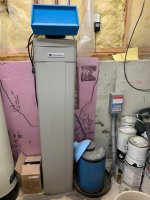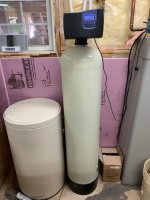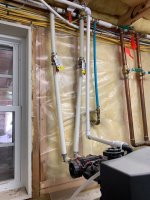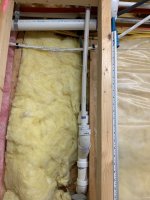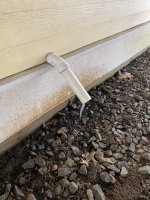Royerm
Member
Hi Folks....
I've had a few occasion where my drain pipe that is ejecting my water
outside has frozen. It happens exactly where the outside and the inside meets.
The outside has a good slope so no problem, but I suspect that my inside keeps
water as I'm going up from the softener and that's what creating the freezing.
So, I was thinking of possibly an automatic method to drain the pipe once my
softener is done..
Any idea????? Cheers
I've had a few occasion where my drain pipe that is ejecting my water
outside has frozen. It happens exactly where the outside and the inside meets.
The outside has a good slope so no problem, but I suspect that my inside keeps
water as I'm going up from the softener and that's what creating the freezing.
So, I was thinking of possibly an automatic method to drain the pipe once my
softener is done..
Any idea????? Cheers


